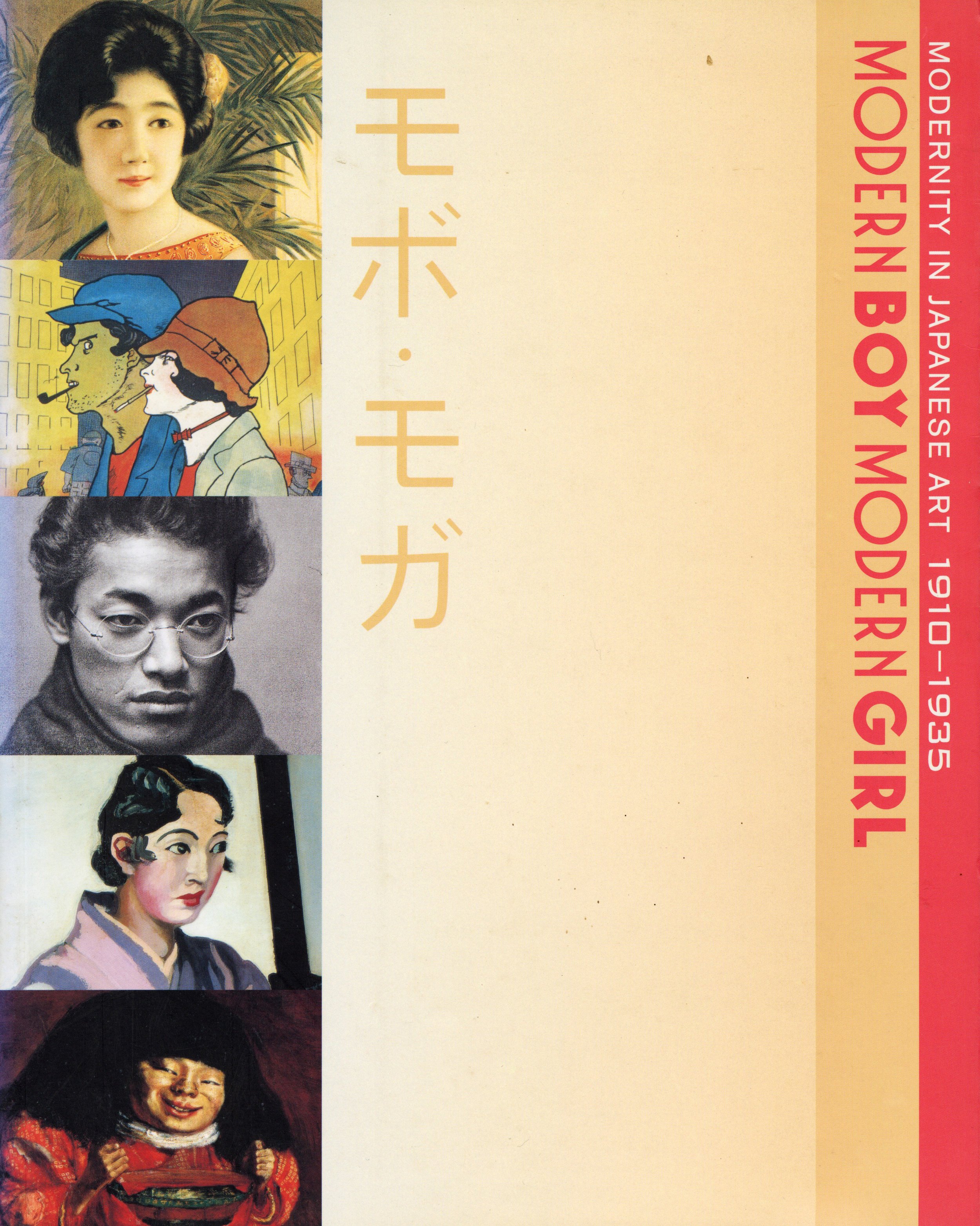<b>Modern Boy Modern Girl: Modernity in Japanese Art 1910–1953</b>$200</em>
Modern Boy Modern Girl: Modernity in Japanese Art 1910–1953
AUTHOR: Jackie Menzies (editor)
PUBLISHER: National Gallery of Australia, 1998
DIMENSIONS: 12 x 9 5/8 x 3/4 inches (softcover)
PAGES: 174
TEXT: English
CONDITION: Excellent, light discoloration to spine
PRICE: $200.00
SEE INSIDE BOOK HERE
CONTACT US TO PURCHASE
Details
The years between the Meiji and early Showa eras were of great social and economic change. Japan was bombarded by a myriad of Western influences and was quick to adopt them for the sake of modernization, affecting all areas of life. It was in this backdrop that the mobo and moga ("modern boy" and "modern girl", respectively) emerged. Inspired by a Western sense of individuality and the newly found freedom of anonymity within the vastness of the growing city, not to mention the tantalizing nightlife of jazzy, smoke-filled dance halls, mobo and moga represented the zeitgeist of this new modern era.
This rarely offered exhibition catalogue is one of the best references available on modernity as expressed in Japanese art and culture. Painting, printmaking, photography, sculpture, and architecture are all considered. The thought-provoking and well-researched essays are profusely illustrated with compelling artwork from this period that is not often illustrated elsewhere. This seminal work is a must have for the art enthusiast of early 20th century Japan.
Modern Boy Modern Girl: Modernity in Japanese Art 1910–1953
AUTHOR: Jackie Menzies (editor)
PUBLISHER: National Gallery of Australia, 1998
DIMENSIONS: 12 x 9 5/8 x 3/4 inches (softcover)
PAGES: 174
TEXT: English
CONDITION: Excellent, light discoloration to spine
PRICE: $200.00
SEE INSIDE BOOK HERE
CONTACT US TO PURCHASE
Details
The years between the Meiji and early Showa eras were of great social and economic change. Japan was bombarded by a myriad of Western influences and was quick to adopt them for the sake of modernization, affecting all areas of life. It was in this backdrop that the mobo and moga ("modern boy" and "modern girl", respectively) emerged. Inspired by a Western sense of individuality and the newly found freedom of anonymity within the vastness of the growing city, not to mention the tantalizing nightlife of jazzy, smoke-filled dance halls, mobo and moga represented the zeitgeist of this new modern era.
This rarely offered exhibition catalogue is one of the best references available on modernity as expressed in Japanese art and culture. Painting, printmaking, photography, sculpture, and architecture are all considered. The thought-provoking and well-researched essays are profusely illustrated with compelling artwork from this period that is not often illustrated elsewhere. This seminal work is a must have for the art enthusiast of early 20th century Japan.
Modern Boy Modern Girl: Modernity in Japanese Art 1910–1953
AUTHOR: Jackie Menzies (editor)
PUBLISHER: National Gallery of Australia, 1998
DIMENSIONS: 12 x 9 5/8 x 3/4 inches (softcover)
PAGES: 174
TEXT: English
CONDITION: Excellent, light discoloration to spine
PRICE: $200.00
SEE INSIDE BOOK HERE
CONTACT US TO PURCHASE
Details
The years between the Meiji and early Showa eras were of great social and economic change. Japan was bombarded by a myriad of Western influences and was quick to adopt them for the sake of modernization, affecting all areas of life. It was in this backdrop that the mobo and moga ("modern boy" and "modern girl", respectively) emerged. Inspired by a Western sense of individuality and the newly found freedom of anonymity within the vastness of the growing city, not to mention the tantalizing nightlife of jazzy, smoke-filled dance halls, mobo and moga represented the zeitgeist of this new modern era.
This rarely offered exhibition catalogue is one of the best references available on modernity as expressed in Japanese art and culture. Painting, printmaking, photography, sculpture, and architecture are all considered. The thought-provoking and well-researched essays are profusely illustrated with compelling artwork from this period that is not often illustrated elsewhere. This seminal work is a must have for the art enthusiast of early 20th century Japan.


